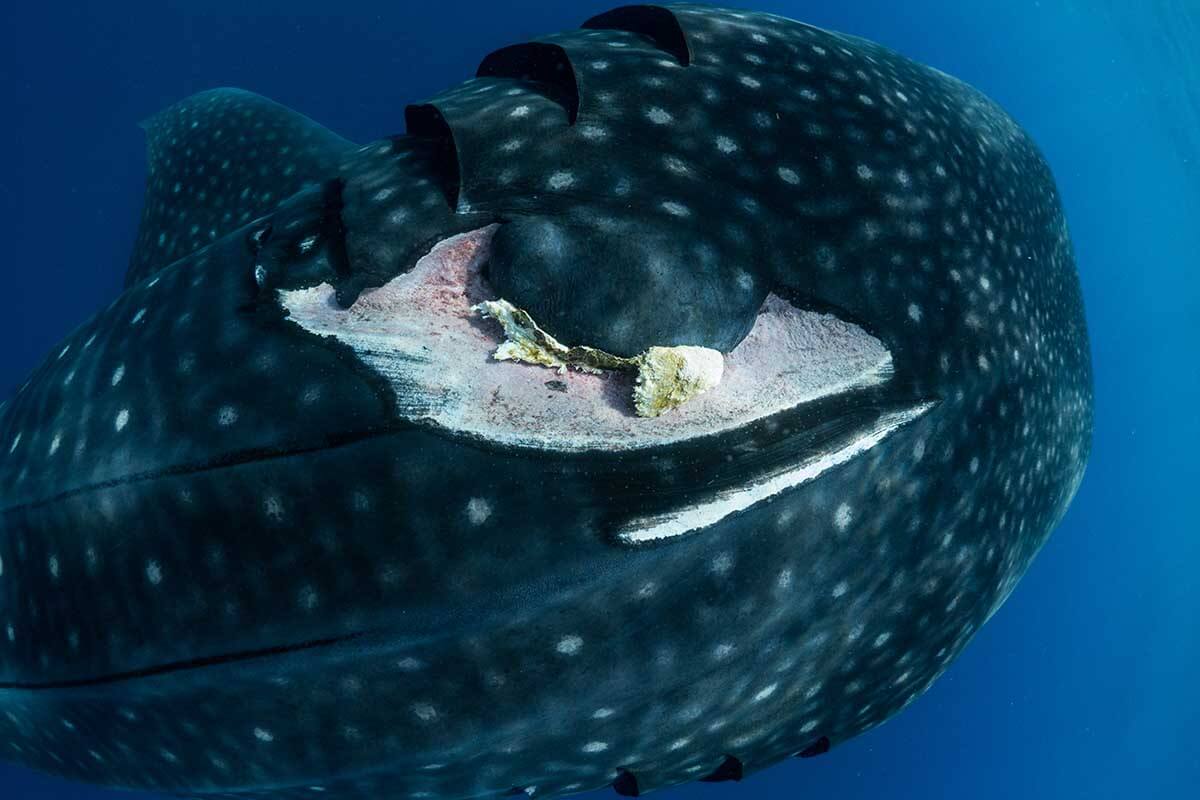
Industrial shipping may be killing a large number of whale sharks across the world, according to a ground-breaking new study
Scientists from the Marine Biological Association (MBA) and the University of Southampton have published research indicating that the fatal collisions of large ships with whale sharks are vastly underestimated, and may be partly to blame for the worldwide decline in whale shark populations.
Whale sharks are a globally threatened species, but the reduction in their numbers in certain regions is not always clear. While overfishing is undoubtedly a factor in their global demise, in locations where protections are in place and fishing does not directly threaten the sharks, scientists looked for other explanations.
Because whale sharks spend a large amount of time in surface waters and gather in coastal regions, experts theorised that collisions with ships could be causing a substantial number of whale shark deaths, but there was no data available to support their hypothesis.
Related articles

In a study led by University of Southampton PhD Researcher Freya Womersley as part of the Global Shark Movement Project, scientists from 50 international research institutions and universities tracked the movements of both whale sharks and ships across the globe to identify areas of risk and possible collisions.
‘The study reveals that ship collisions are a more concerning threat than anticipated,’ said Womersley. ‘We found high shipping activity occurred across most of the whale sharks’ range and was centred in hotspot areas where the species aggregates coastally for significant portions of the year.
‘These surprising findings indicate that this threat stretches across the species entire ocean-scale population range and that collisions likely killed individuals in the dataset.’
Satellite tracking data from nearly 350 electronically-tagged whale sharks was combined with data from the Automatic Information Systems (AIS) which track the movement of shipping vessels. The data were used to create ‘hotspots’ at which shark movement overlapped shipping lanes used by vessels over 300 gross tons in size, and showed that more than 90 per cent of whale shark movements intersected with large maritime traffic.

The study found that not only was there a significant overlap between the movement of the sharks and ships, but transmissions from tagged whale sharks ended more frequently in busy shipping lanes than they did in the open ocean. Once technical failure of the tags had been eliminated as a possibility, the team concluded that loss of transmissions was likely due to whale sharks being struck, killed and sinking to the ocean floor.
‘Incredibly, some of the tags recording depth as well as location showed whale sharks moving into shipping lanes and then sinking slowly to the seafloor hundreds of metres below, which is the ’smoking gun’ of a lethal ship strike,’ said Professor David Sims, Senior Research Fellow at the MBA and University of Southampton and founder of the Global Shark Movement Project. ‘It is sad to think that many deaths of these incredible animals have occurred globally due to ships without us even knowing to take preventative measures.’

At present there are no international regulations to protect whale sharks against ship collisions. The research team say that this species faces an uncertain future if action is not taken soon. They hope their findings can inform management decisions and protect whale sharks from further population declines in the future.
‘The maritime shipping industry that allows us to source a variety of everyday products from all over the world, may be causing the decline of whale sharks, which are a hugely important species in our oceans,’ said Womersley. ‘Collectively we need to put time and energy into developing strategies to protect this endangered species from commercial shipping now, before it is too late, so that the largest fish on Earth can withstand threats that are predicted to intensify in future, such as changing ocean climates.’
The full paper ‘Global collision-risk hotspots of marine traffic and the world’s largest fish, the whale shark,’ by Freya Womersly, et al, is published in Proceedings of the National Academy of Sciences U.S.A, https://doi.org/10.1073/pnas.2117440119


